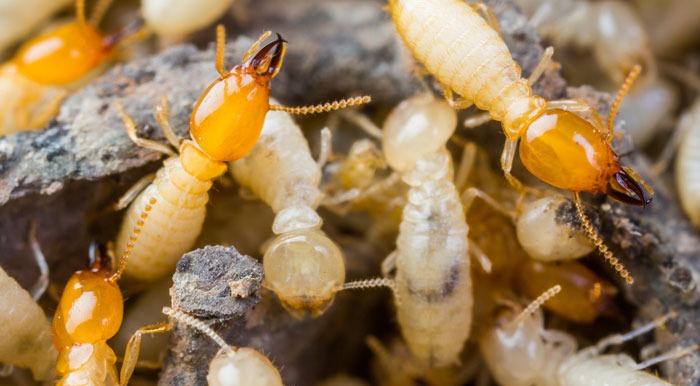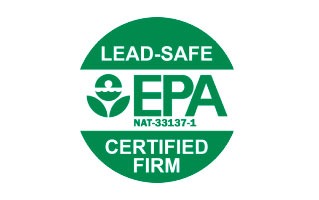
Termites, also referred to as “silent destroyers” because of their ability to chew through wood and flooring undetected from the inside out, have been around for centuries.
Each year, termites are known to cause more than $5 million in property damage and unfortunately, termite damage isn’t covered by homeowner’s insurance. It’s incredibly important to utilize pest control to treat and eradicate a termite infestation when you spot one. Before purchasing a new home, it’s often recommended to complete a termite inspection.
There are about 45 different types of termites found in the United States that fall into three different categories: subterranean termites, drywood termites and dampwood termites.
Termites are small; they typically measure between 4-5 millimeters with long, oval shaped bodies. They are somewhat difficult to identify because they can be confused with other types of pests like flying ants. Depending on their species, termites vary in color. Some have cream bodies with darker heads, and others are cream or brown. Most termites are blind.
While termites are active year-round, in Pennsylvania termites typically emerge between the months of March and June.
Types of Termites in Pennsylvania, New Jersey and Delaware

Eastern Subterranean Termites
(Reticulitermes flavipes)
Eastern subterranean termites are the most popular type of termite in the United States and are commonly found in Pennsylvania. This type of termite is known as a “timber pest” because of the damage they cause to structural timbers in buildings. When damage is visible, it’s typically the result of years of termite infestation meaning that once you’ve spotted the damaged wood, the problem can be serious. This type of termite is about 3/8 of an inch long with a dark brown body and wings. Eastern subterranean termites feed on old roots, tree stumps, fallen tree limbs and branches on the ground. Eastern subterranean termites prefer warm days after it rains, so look for activity between March and June. These termites tend to swarm in large numbers in the spring. Eastern subterranean termites are stubborn creatures that are notorious for entering buildings through areas not always accessible to inspectors.

Drywood Termites
(Kalotermitidae)
While drywood termites are not native to Pennsylvania, they can hide in wood that is transported between locations. Keep an eye out especially for wooden furniture or crates. This type of termite is most commonly found on the West Coast and they tend to prefer warm weather or warm buildings. Drywood termites have six legs, are creamy white to brown in color and are about ⅜-inch to an inch long.
Signs of an Infestation
Here are some signs of a termite infestation:
- Mud tubes on walls
- Swarmers
- Shed wings
- Damaged or hollowed wood
- Clicking sounds
- Sticking doors and windows
You can also visibly check to see if you may have termites by probing exposed wood for hollow spots.
Health and Damage Considerations
Termites are not harmful to humans. They typically don’t bite, sting or spread disease. However, some people living in homes with termite infestations experience allergies or even asthma attacks. While termites aren’t a huge danger to humans, they do cause costly damage to homes, businesses and other structures. According to the EPA, termites cause billions of dollars in structural damage, and property owners spend over two billion dollars on termite treatments. Termites can also cause damage to food crops.
Behavior
Termites are social insects that live in colonies with castes (workers, soldiers, reproductives) to perform specific colony functions. A queen termite sits at the top of the caste. Because they are blind, they communicate in other ways — through vibrations and pheromones. Termites swarm to mate and start new colonies, and sometimes experience conflict between two different colonies.
Habitat
Some types of termites live underground in soil (subterranean) while others live in dry wood — like in the walls of a home. Within a home, termites most commonly damage walls, but can also live in the walls or ceiling of a bathroom. Drywood termites, in particular, can live within wooden structures like furniture and survive without water or soil.
Lifecycle
A termite’s life cycle includes three stages: egg, nymph and adult. It can take months for a nymph to become an adult depending on availability of food sources, temperature and other factors. Termites live for different durations depending on their place within a caste. Worker and soldier termites can live for 1-2 years, while some termite queens can live up to 50 years. When a colony is several years old, a queen termite can lay up to 1,000 eggs per day.
Feeding
Termites eat anything that has cellulose in it, including wood. They may also eat dead plants or trees. Subterranean termites can feed on mulch, wood piles, bushes, stumps, construction materials, fencing and other objects and structures made of wood.





